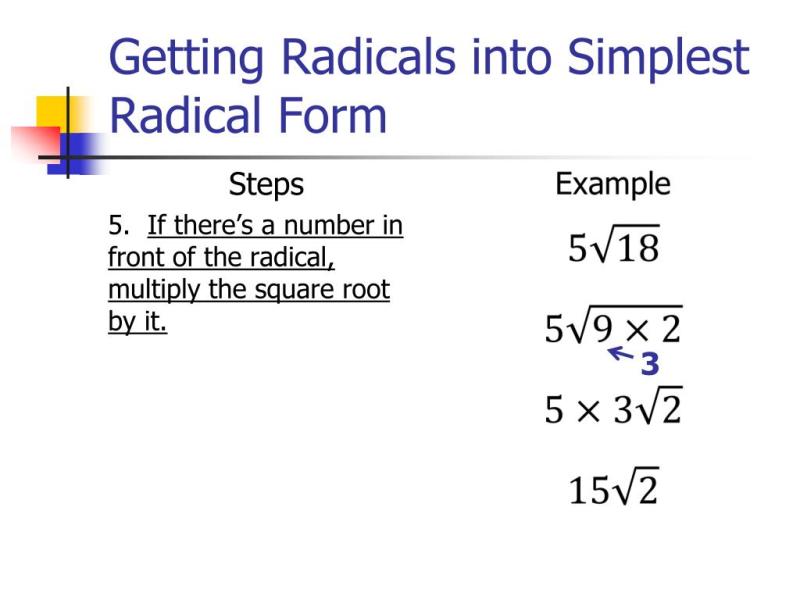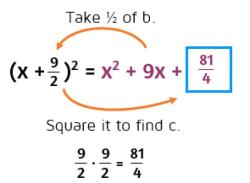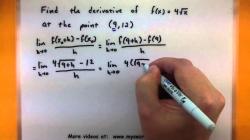How to convert to radical form?
Converting expressions to radical form involves expressing them using root notation (√ for square root, ∛ for cube root, etc.) or fractional exponents to represent roots. Here's a step-by-step guide:
Identify the Exponent: Start with an expression in exponent form, such as or , where 'n' represents the power or root.
Use Radical Notation:
- For square roots (√): Express as √(x).
- For cube roots (∛): Express as ∛(x).
- For higher roots (∜, ∛ⁿ): Use the radical symbol (∛ for cube root, ∜ for fourth root, etc.) and write the expression as or , where 'n' represents the root.
Convert Fractional Exponents:
- To convert expressions with fractional exponents to radical form, the denominator of the exponent represents the root while the numerator is the power.
- For example, would be expressed as . Here, 'm' is the power to which 'x' is raised, and 'n' is the root.
Here are a few examples of converting from exponent form to radical form:
- can be written as , representing the square root of 'x' cubed.
- is equivalent to , representing the cube root of 'y' raised to the power of 4.
- can be expressed as , representing the fourth root of 'z' raised to the power of 5.
Expressing expressions in radical form can help simplify complex expressions involving roots and fractional exponents. Understanding this conversion allows for clearer representation and manipulation of mathematical expressions involving roots and powers.
How can mathematical expressions be converted into radical form?
Converting mathematical expressions into radical form involves simplifying expressions with irrational numbers, including roots and exponents. Here are some steps and rules to guide you:
1. Identify the radicals: Look for expressions with square roots, cube roots, or other higher-order roots.2. Simplify existing radicals: If possible, simplify any existing radicals by factoring the radicand (the number under the radical symbol) and extracting perfect squares, cubes, or higher-order powers.3. Combine like terms: Group all radicals with the same index (e.g., all square roots) together.4. Rationalize denominators: If any denominators contain radicals, eliminate them by multiplying both the numerator and denominator by the appropriate conjugate (the expression obtained by rationalizing the denominator).5. Apply exponent rules: Remember that exponents inside a radical can be distributed and simplified.6. Simplify further: Look for any further simplification opportunities, such as combining radicals with the same radicand and simplifying fractions.
Here are some additional rules for converting expressions to radical form:
- √a * √b = √(ab): The product of two square roots is the square root of their product.
- (√a)^n = √(a^n): The nth power of a square root is the square root of the nth power of the radicand.
- √a / √b = √(a/b): The ratio of two square roots is the square root of their ratio.
- √a^n = a^(n/2): For even exponents n, the square root of a^n is equal to a^(n/2).
Remember that the specific steps and rules might vary depending on the complexity of the expression.










